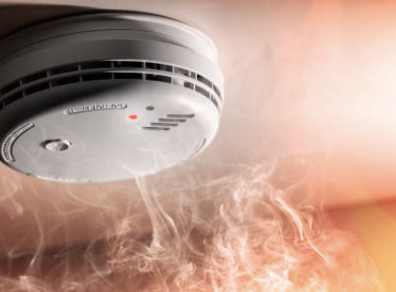
Do you want to know all about combination smoke and carbon monoxide detector? In this article, we will tell you about it.
Well, there are 2 different types of detectors. Your life may be saved by installing and maintaining smoke and carbon monoxide detectors. Fortunately, they are affordable and simple to install.
So, do you want to know what it takes to understand fumes, their workings and their connections?
Varieties of Smoke Detector
Types of Smoke Detectors
Ionization and Photoelectric smoke detectors are the 2 varieties. These devices each specialize on a particular form of ignition, although they will both operate when there is smoke. Ionization detectors will respond faster to flames, while photoelectric detectors would catch smoking fires earlier.
The type of detector it is will be identified on each box and on the back of each item.
Remember these things while using smoke detectors
- When you buy something it expires one day and then you replace it with a new one, similarly replace the smoke detector in 7-10 years.
- Incorrect results are possible after 7 to 10 years, the detector used batteries more quickly, and the internal sensors start to degrade.
- Don’t install detectors in your bedroom and kitchen because it can cause generate inaccurate alarms.
Suggestions
- The things we have that run on batteries, the batteries need to be replaced after a while. And when does it come to know whether the battery needs to be changed or not? That device automatically gives you an indication. Similarly, a detector should generally have its batteries changed if it beeps intermittently.
- Do not simply unplug the detector to silence the beeping.
- Smoke detectors and smoke alarms are equivalent in residential contexts. You can check the information regarding your smoke detector on the back of your device and you can also know if it’s an Ionized or photoelectric smoke detector.
Let’s Learn More About Carbon Monoxide Detectors
In order to avoid carbon monoxide detector poisoning, a carbon monoxide detector is a device that looks for the existence of the CO gas.
-Carbon monoxide detectors should be placed outside of a mechanical area if you have a propane furnace. Additionally, one must to be placed close to any gas-powered equipment.
-CO detectors can be used separately or in conjunction with a smoke detector.
If you sensor notices a significant accumulation of CO in your home, the CO alarm will go off. Make sure your detector can detect a 50 PPM or less because most start to experience the effects of CO at the concentration.
Symptoms of CO Poisoning
The amount of oxygen in your RBCs may decrease if there is an excessive amount of CO in the air you breathe. CO poisoning symptoms include flu-like signs, Nausea, hazy vision and other reasons.
Now you must be thinking that in whom these symptoms would be found first of all. No? So, let us tell you that children, old people and your pets are prone to exhibit carbon monoxide poisoning symptoms initially.
Conclusion
If you found 0 PPM reading, then don’t lose your calm. In that situation, you have to act smartly and you have to handle that situation with calm. The mere fact that the reading is higher than 0 PPM does not need you to leave your house, you can call your relatives or friends so that they can bring help for you.
According to federal regulation, any measurement below 35 PPM is considered safe for persons exposed for longer than 8 hours. So, all you have to do is keep calm and handle the situation wisely without panicking.
FAQ’s
Q: – Where should smoke detectors be placed why?
A: – In the event of a fire, the air just above the flames warms up and rises. So, the room’s ceiling should be equipped with a smoke detector.
Q: – Where should I site my carbon monoxide detector?
A: – The same room where fuel burning appliances, such as gas ranges, are fixed on the wall or the ceiling should also have a CO alarm. Areas like the hallway where individuals spend the most time. Bedrooms may contain additional alarms.
You may be interested in: 4 Safety Checks When Staying at an Airbnb in the UK

